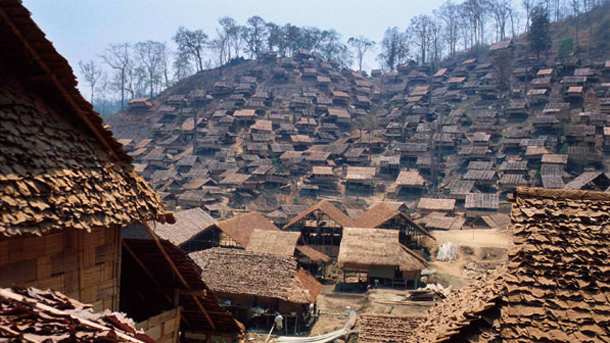RANGOON/CHIANG MAI — One of the world’s largest resettlement programs, providing Burmese refugees living on the Thai border with an opportunity to start life anew in the United States, has officially come to a close, the UN said on Wednesday.
Last applications for the group resettlement program were accepted on Friday, in a discontinuation that was a year in the making and has seen more than 73,000 refugees resettled to the United States since 2005.
“We expect several more thousand to arrive in the coming year as the program winds down,” said Assistant Secretary Anne C. Richard of the US Department of State’s Bureau of Population, Refugees, and Migration, in a press release from the UN High Commissioner for Refugees (UNHCR)’s regional office in Bangkok. “This successful resettlement program has reached its natural conclusion following the January 24, 2014 deadline for Burmese refugees to express their interest in resettlement to UNHCR.”
The program’s final year saw nearly 6,500 refugees apply for resettlement, 2,500 more applicants than in 2012, “an indication that many refugees had been waiting for the last chance before making a final decision to resettle or not,” the UNHCR said.
Burmese refugees on the Burma-Thailand border, some of whom have been living in camps there for nearly 30 years, form a displaced population of more than 120,000, residing across nine camps in Thailand.
The first camp, Mae La, was informed that the group resettlement program would be coming to an end in January 2013, and a staggered notification of the impending termination had been implemented across the nine camps in the year since. Three camps in Thailand’s Mae Hong Son Province were the last to have a shot at applying for the program, and were notified of this in October.
“The end of this chapter does not mean that resettlement is closed completely,” said Mireille Girard, the UNHCR’s representative in Thailand. “UNHCR will continue to identify and submit refugees with specific protection needs on an individual basis to various countries.”
Vivian Tan, UNHCR’s regional spokeswoman, explained to The Irrawaddy that the end of group resettlement meant that future applicants for third-country resettlement would not benefit from “simplified procedures in interviewing and screening” that the US program offered, but she added that the UNHCR would continue to make family reunification a priority in future applications.
“In some exceptional cases where a family has been resettled but for some reason left behind an immediate family member, we work with the Thai authorities and resettlement countries to try and reunite them,” Tan said.
Beginning in the mid-1980s, a stream of refugees have fled Burma across the Thai border, largely driven out by Burmese government military offensives, and the former junta’s persecution of ethnic minorities and suppression of political dissent. Ethnic Karen refugees make up the majority of the Thai camps’ inhabitants.
A series of ceasefire agreements inked between the government of Burmese President Thein Sein and ethnic minority rebel groups since 2011 has brought hopes that an end to six decades of civil war in Burma may be within reach.
But the “peace dividend” for refugees on the Thai border has taken the form of decreasing international humanitarian support—including a reduction in refugees’ rice rations—amid a growing sense that the displaced should be repatriated to their homeland if the situation in Burma continues to improve.
That potential return is not in the line with the wishes of the majority of refugees in at least one Thai border camp, according to a survey taken last year. Conducted at the Mae La camp, Thailand’s largest, the survey found that 90 percent of refugees said they would prefer to resettle in a third country or remain in Thailand over repatriation to Burma. In explaining their reluctance, survey respondents cited reasons ranging from safety concerns to doubt over their ability to sustain a livelihood back in Burma.
The UNHCR reiterated on Wednesday that it did not feel the time for an organized return was yet at hand.
For the remaining refugees in the border camps, a spokesman for the Thai Border Consortium (TBC), which provides humanitarian aid to the camps, said the need for “urgent and ongoing humanitarian and development assistance” persisted.
“The greatest needs for those in the camp continue to be basic humanitarian protection; that is to say, funding for food, shelter, health, education and camp management services,” Mike Bruce told The Irrawaddy on Thursday, highlighting the fact that some 40,000 refugees in the Thai camps had not registered with the UNHCR and thus were ineligible, except in rare circumstances, for the US group resettlement program.
The United States is by far the world’s largest third-country recipient of refugees from Burma. Australia has resettled the second-most, according to the UNHCR, accepting 10,220 applicants for resettlement from 2005 through August 2013.

















